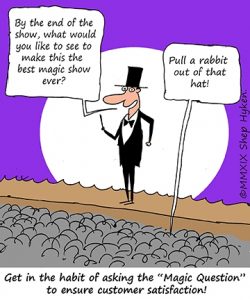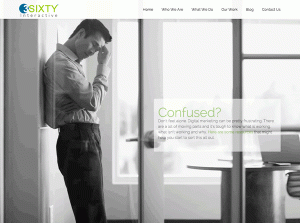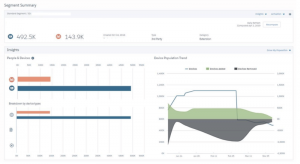— June 26, 2018
If you ask five different people to define “project failure,” you’ll likely get five different answers. This is because project failure is subjective, determined by both a project’s success criteria and the metrics used to evaluate its performance during and after its end.
One project might be deemed a success if it adheres to the planned timeline, another if it stays within its initial budget, and still another if it avoids scope creep. But if someone else were to gauge success by associated level of customer satisfaction, and these projects didn’t meet customer expectations, each of these could also be called a failure.
Because failure is subjective, it’s essential to build success criteria into a project plan, and it’s even more important that each stakeholder is aligned under the same definition of success.
Misalignment results in miscommunication, discontent, and the eventual fragmenting of teams into silos—a recipe for ineffectiveness.
But if each stakeholder is working together toward the same goal and they agree on which constraint to prioritize over another, then each project will successfully deliver value.

In this article, we’ll review five success criteria that are commonly used to measure the success or failure of a project and highlight tools you can use to track performance.
Jump to:
1. Scope
2. Schedule
3. Budget
4. Achievement of Business Goals
5. Customer Satisfaction
Conclusion
How to measure project success
1. Scope
Scope is the intended results of a project and the work that must be done to achieve those results. It outlines the specific goals, deliverables, features, etc., that a project is expected to deliver, plus the tasks, deadlines, and costs it will take to get there.
If you don’t have a fully defined scope at the start of a project, then scope should not be your primary success criterion. Keep in mind that a key trademark of Agile is a lack of fully defined requirements before kickoff, so Agile projects should use a different metric.
When you increase a project’s scope, you must also increase budget and/or time. All too often with scope creep, stakeholders want to add requirements after a project is underway but don’t want to compromise on other constraints.
WHAT’S AT RISK: In the past year, 52% of projects experienced scope creep, according to Project Management Institute (PMI)’s 2018 Pulse of the Profession report.
How to track scope: During project planning, work with stakeholders to create a work breakdown structure that:
- Identifies all project requirements
- Divides requirements into smaller deliverables
- Outlines tasks required to complete deliverables (and key resources*)
- Estimates the time required to complete each task
- Determines the project’s critical path
*Resources play a significant role in understanding the scope of your project. You have to know your team’s bandwidth, the utilization of key resources, and how pay rates impact the budget.
Once you understand the critical path and how resource constraints impact the project plan, you can use Gantt Charts to visualize the project.
Seeing the project laid out across a calendar is a great way to get all stakeholders to understand the scope of the project and how specific requirements are achieved over an allotted time and budget.
Gantt Charts also double as a project tracking tool; managers can use them to keep an eye on performance and ensure projects are on track to deliver the intended scope.
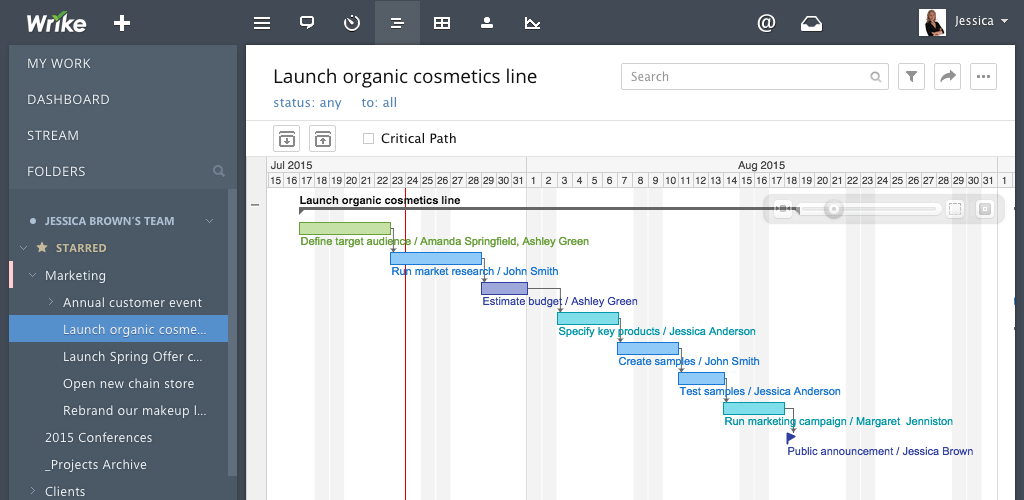
A Wrike Gantt Chart outlining the launch of an organic cosmetics line (Source)
2. Schedule
Schedule is your project timeline. It encompasses not just your final close date (or product launch, as the case may be), but also important milestones and task deadlines along the way.
The most common reason that projects exceed their initial schedule is overworked employees. Rather than expecting employees to give 100% to a project, acknowledge that, realistically, they can devote just 33% of their available time to projects, according to Gartner.
In “Resource Capacity Planning for PPM Leaders: Crawl Before You Walk” (full report available to Gartner clients), analysts Robert Handler and Mbula Schoen say:
“Forcing people to jump from one activity to another unrelated activity through overcommitment imposes a cost of 20 minutes to two hours in terms of the efficiency and effectiveness of project work.”
To avoid schedule overruns, you need to plan slack—or float—into your timeline and your resource capacity.
If schedule is your most important success criterion and you notice your timetable starting to slip, you’ll need to increase your budget to get more people on board to help recoup your time losses or decrease the scope of the project to accomplish what you can by the deadline.
WHAT’S AT RISK: In the past year, 48% of projects were not completed within their initial schedule, according to PMI’s 2018 Pulse of the Profession report.
How to track schedule: There are numerous tools that can help you track your project schedule, including Gantt Charts and calendars. But it’s important to keep in mind that you also need to monitor resource constraints.
Specific KPIs to track that can help keep your project on schedule include:
- Percentage of tasks completed
- Overdue project tasks
- Missed milestones
- Schedule performance index: Earned value (EV) / planned value (PV)
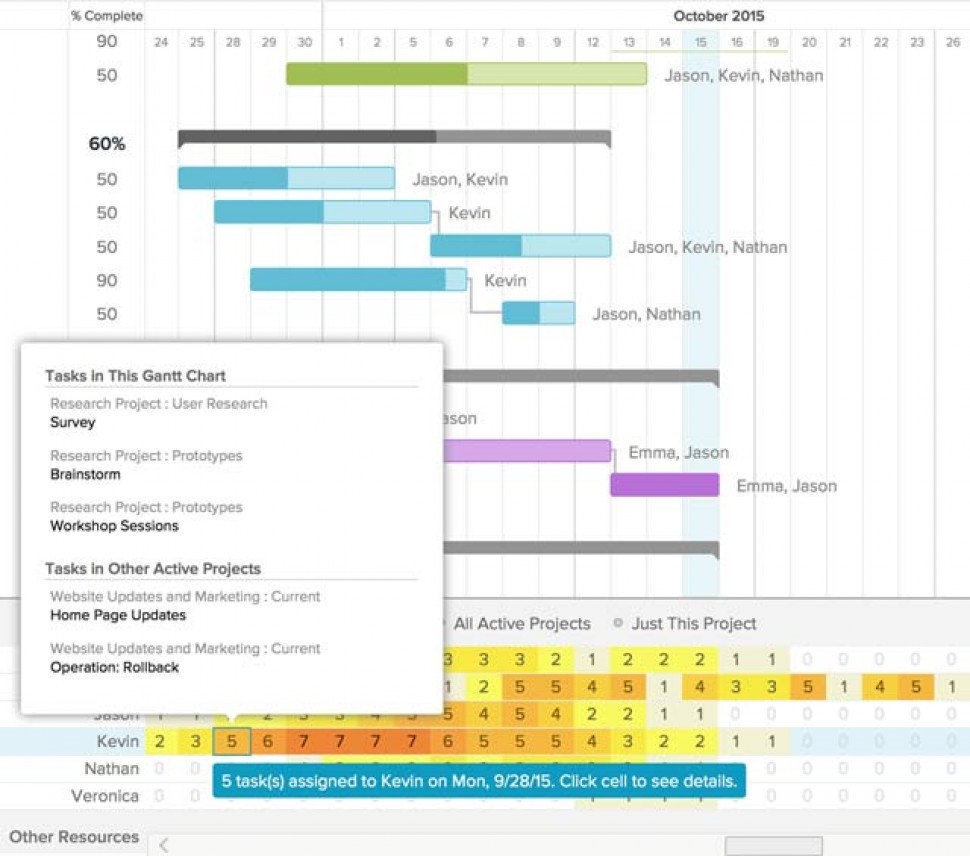
Viewing tasks and resource utilization in TeamGantt (Source)
3. Budget
Budget is what your project will cost. How much are you estimating to spend to complete the scope of work? What funds are you investing in the project?
When projects exceed their initial budget, it’s almost always the result of poor planning. You need to identify every possible expense (wages, materials, design, testing, etc.), estimate the cost for each line item, and also plan for things to go wrong.
To avoid cost overruns, it’s important to plan contingency into your budget, not only to account for unexpected costs but also in case your estimates turn out to be inaccurate.
Most experts agree you should add anywhere from ten to 30% contingency to project budgets. And if a project is high profile, you may want an additional risk response budget.
Budget is intricately tied to the other success criteria mentioned here. If this is your primary constraint (as is often the case), and your actual costs start to exceed your planned spend, you’ll need to compromise on schedule, scope, and/or customer satisfaction in order to break even.
WHAT’S AT RISK: In the past year, 43% of projects weren’t completed within their initial budget, according to PMI’s 2018 Pulse of the Profession report.
How to track budget: To accurately track budgets, you’ll need automated tools, not spreadsheets. Consider creating an expense database to help you more accurately estimate project costs in the future.
Specific KPIs to track that can help you keep your project on budget include:
- Planned value
- Actual cost
- Earned value
- Cost performance index: Earned value (EV) / actual cost (AC)
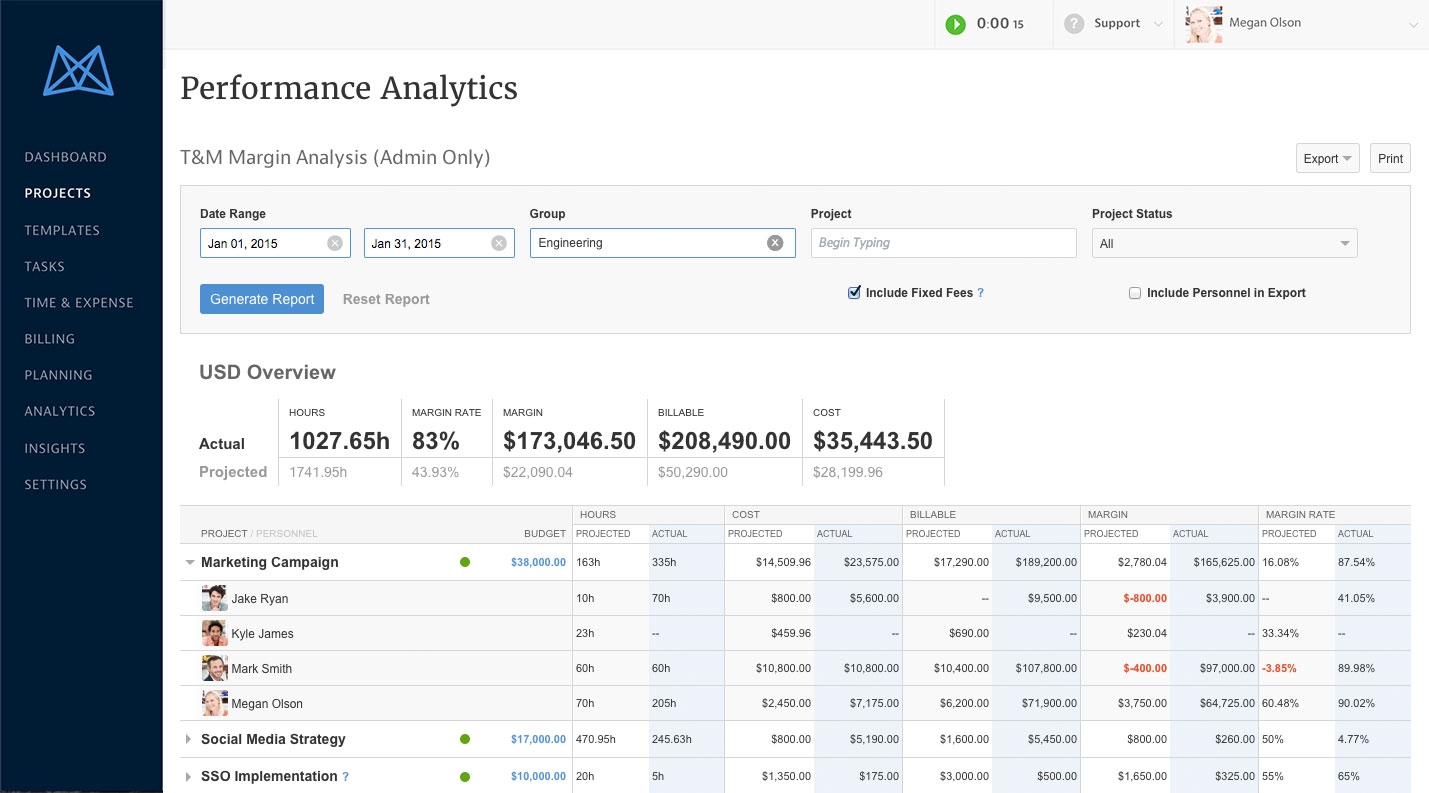
Viewing time and materials (T&M) performance analytics in Mavenlink (Source)
4. Achievement of business goals
Achievement of business goals is how your project performed against its business case. Did it achieve the expected benefits (both tangible and intangible)? Did it deliver the expected return on investment (ROI)?
With the fast rate of change brought on by digitalization, it’s not uncommon for the business problem or objective that initially incentivized a project to shift over time, or disappear altogether. Redundant projects waste time, money, and resources—plus, they don’t deliver anything of value to your organization.
WHAT’S AT RISK: In the past year, 31% of projects did not meet their original business goals and their business intent, according to PMI’s 2018 Pulse of the Profession report.
How to track achievement of business goals: You likely have a queue of projects awaiting a green light. Before any initiative is given the go-ahead, have a cross-department committee review the business case to ensure it still aligns with organizational goals.
Questions to ask include:
- Is the project unique?
- How does the project rank in relation to business goals? (Is it high, medium, or low priority?)
- What is the risk-return profile? (High risk, high return, low risk, low return)
Then, once the project is underway, periodically review intent versus business needs to ensure the project will ultimately deliver value.

Example matrix showing projects prioritized by business objective
5. Customer satisfaction
Customer satisfaction refers to the degree to which project results meet—or exceed—expectations. This encompasses the quality of deliverables, overall customer experience, customer service, and communication between internal and external stakeholders throughout the project life cycle.
This success metric is critically important, and yet it’s often compromised the most. Does it matter if you win by one or by 100 if they’re both wins? That depends on the project, and the other success criteria on the table.
Keep in mind, however, that 52% of customers have switched providers in the past year because of poor customer service, according to Accenture’s Global Consumer Pulse survey. And having switched, 68% won’t go back.
WHAT’S AT RISK: According to Gartner’s 2018 IT Key Metrics Data 2018 report (available to Gartner clients), 26% of internal project participants (ranging from CIOs to IT personnel) do not feel that they adequately satisfied customer expectations, rating their perceptions of customer satisfaction as “expectations not met” or “somewhat disappointing.”
How to track customer satisfaction: There are several ways you can gather and analyze feedback from your customers, including:
- Social media listening
- Customer surveys (include open-field responses, not just a number rating)
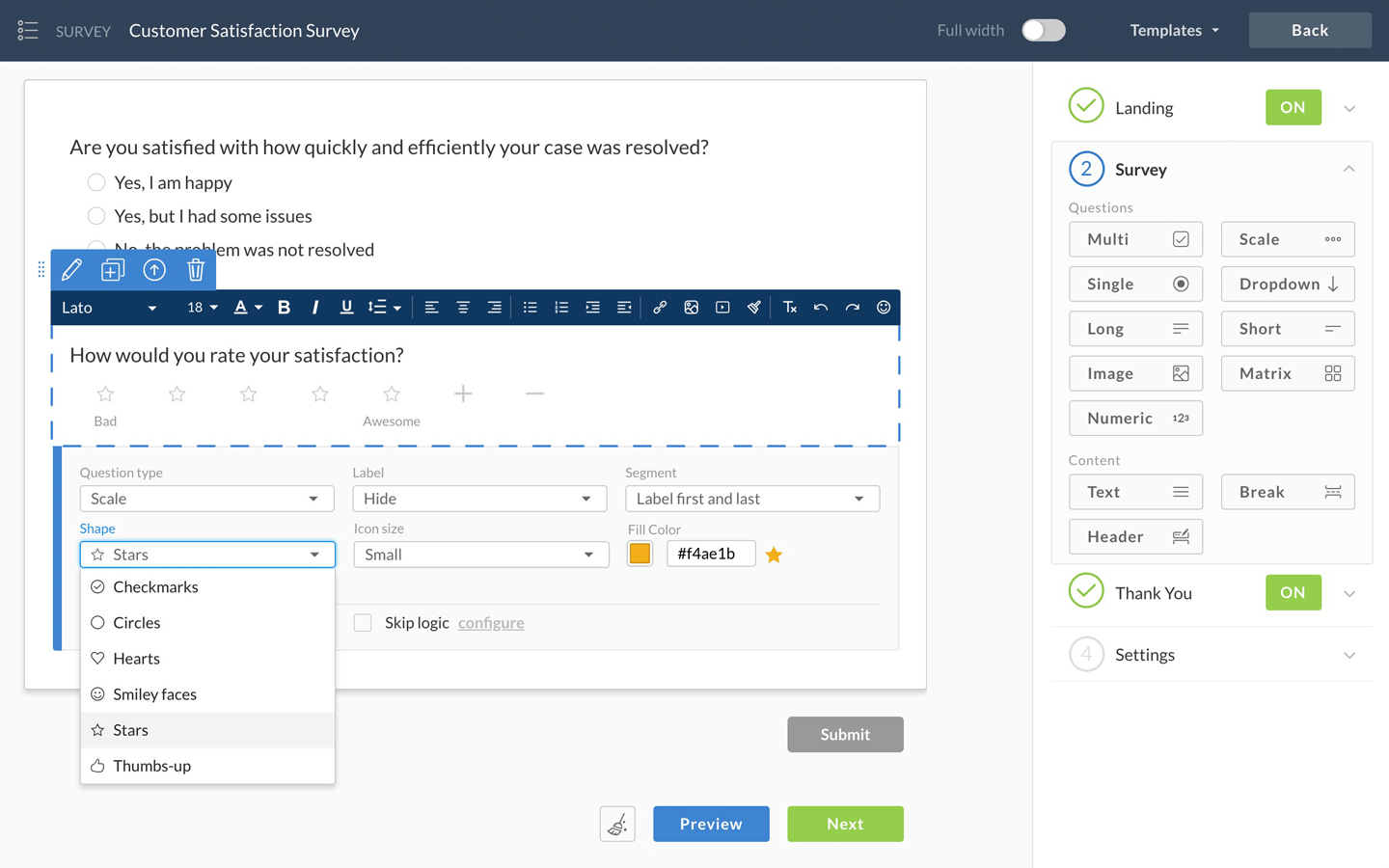
Building a customer satisfaction survey in Nextiva (Source)
Conclusion
“Fast, cheap, or good—pick two.”
This adage about the iron triangle is popular for a reason. It still applies—and is probably truer than ever—with the additional constraints of stakeholder satisfaction and achievement of business intent added into the mix.
Early in planning, identify which project constraint is most important to your project and make that your defining success criteria.
Most importantly, ensure that each stakeholder is aligned under, and helping to support, the successful delivery of that metric.
How else do you measure the success of projects? Are there other success criteria you use to evaluate performance? Tell me in the comments below.
Business & Finance Articles on Business 2 Community
(268)
Report Post


